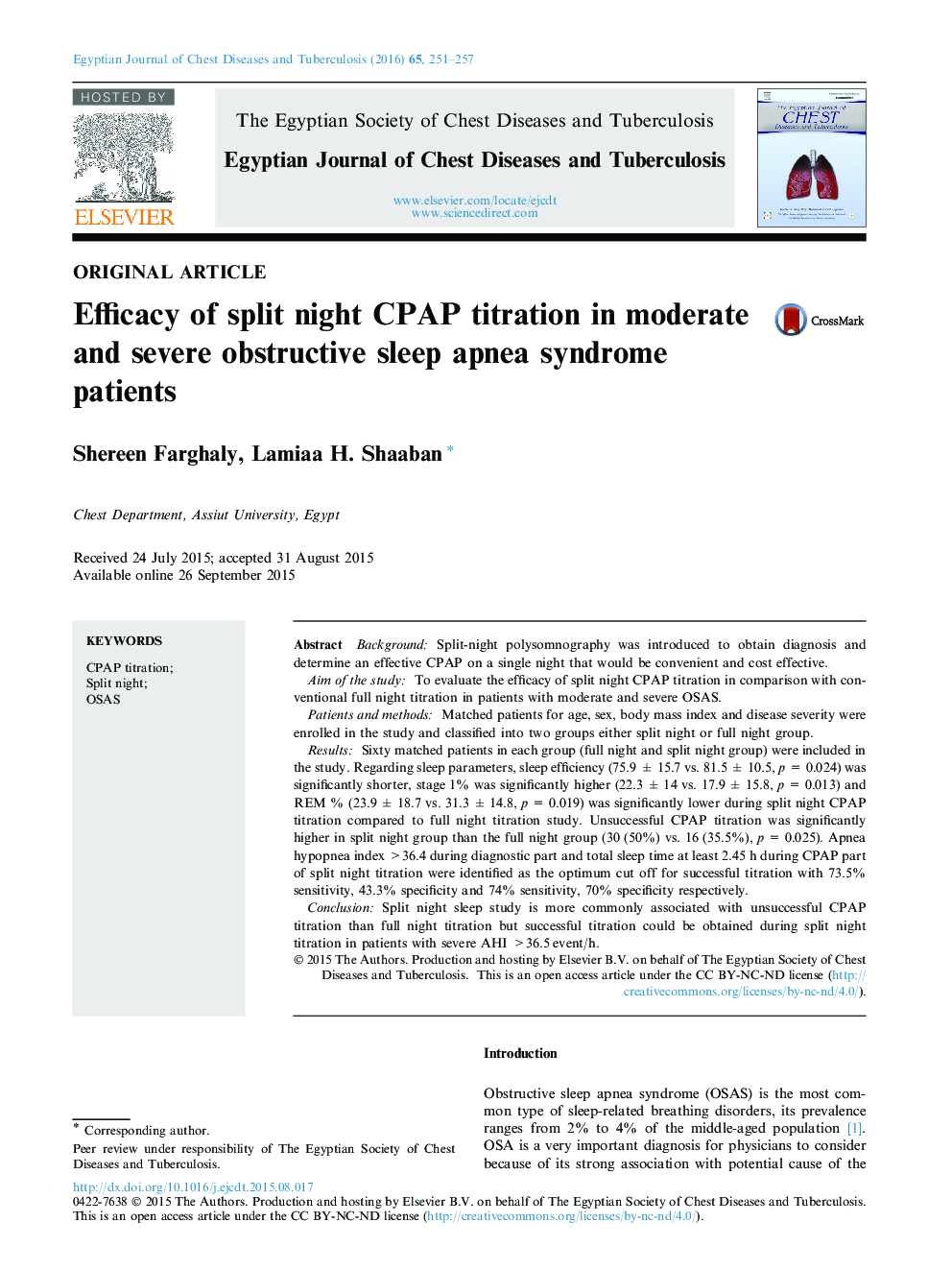| Article ID | Journal | Published Year | Pages | File Type |
|---|---|---|---|---|
| 3399911 | Egyptian Journal of Chest Diseases and Tuberculosis | 2016 | 7 Pages |
BackgroundSplit-night polysomnography was introduced to obtain diagnosis and determine an effective CPAP on a single night that would be convenient and cost effective.Aim of the studyTo evaluate the efficacy of split night CPAP titration in comparison with conventional full night titration in patients with moderate and severe OSAS.Patients and methodsMatched patients for age, sex, body mass index and disease severity were enrolled in the study and classified into two groups either split night or full night group.ResultsSixty matched patients in each group (full night and split night group) were included in the study. Regarding sleep parameters, sleep efficiency (75.9 ± 15.7 vs. 81.5 ± 10.5, p = 0.024) was significantly shorter, stage 1% was significantly higher (22.3 ± 14 vs. 17.9 ± 15.8, p = 0.013) and REM % (23.9 ± 18.7 vs. 31.3 ± 14.8, p = 0.019) was significantly lower during split night CPAP titration compared to full night titration study. Unsuccessful CPAP titration was significantly higher in split night group than the full night group (30 (50%) vs. 16 (35.5%), p = 0.025). Apnea hypopnea index >36.4 during diagnostic part and total sleep time at least 2.45 h during CPAP part of split night titration were identified as the optimum cut off for successful titration with 73.5% sensitivity, 43.3% specificity and 74% sensitivity, 70% specificity respectively.ConclusionSplit night sleep study is more commonly associated with unsuccessful CPAP titration than full night titration but successful titration could be obtained during split night titration in patients with severe AHI >36.5 event/h.
